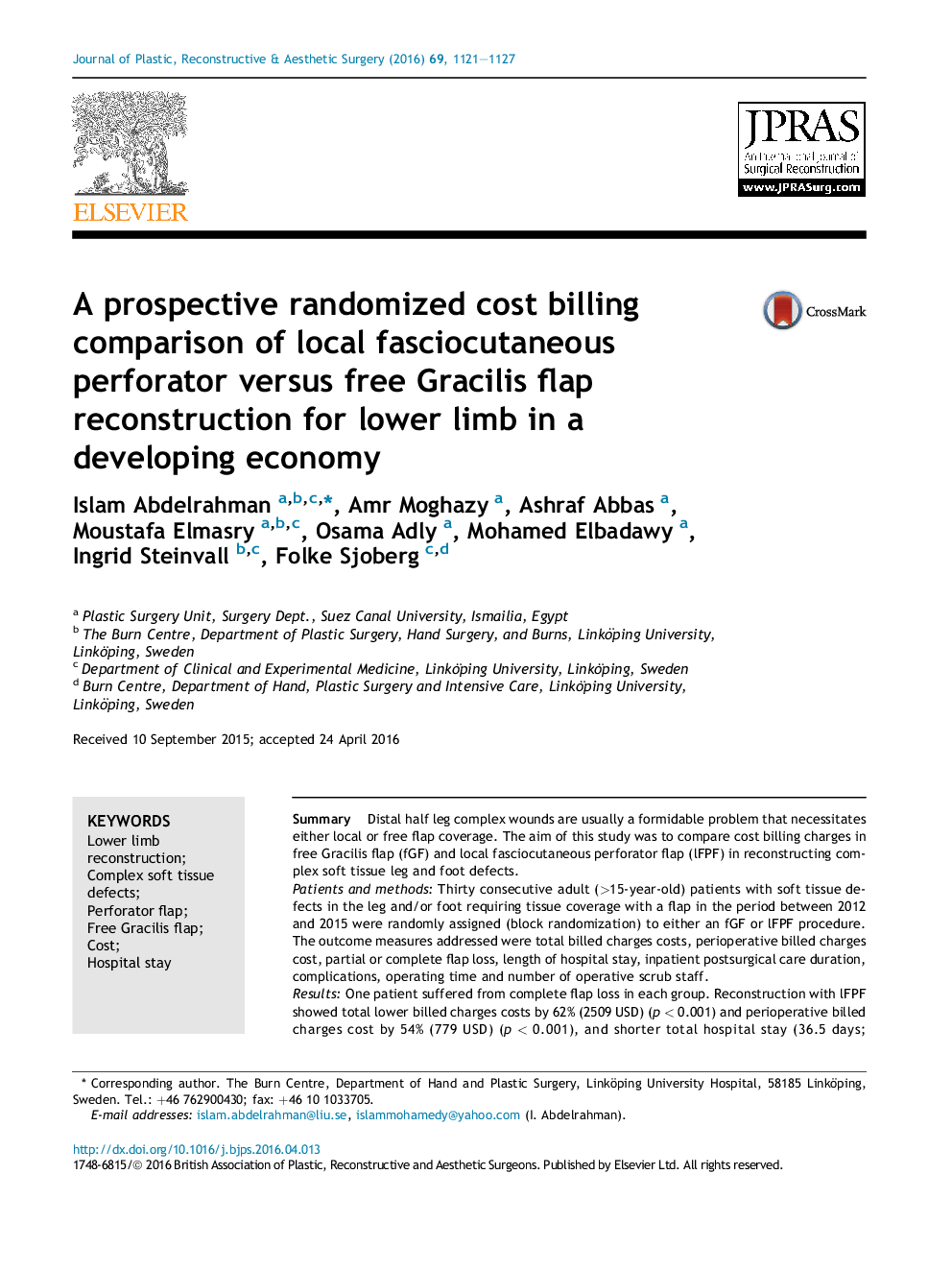| Article ID | Journal | Published Year | Pages | File Type |
|---|---|---|---|---|
| 4117020 | Journal of Plastic, Reconstructive & Aesthetic Surgery | 2016 | 7 Pages |
SummaryDistal half leg complex wounds are usually a formidable problem that necessitates either local or free flap coverage. The aim of this study was to compare cost billing charges in free Gracilis flap (fGF) and local fasciocutaneous perforator flap (lFPF) in reconstructing complex soft tissue leg and foot defects.Patients and methodsThirty consecutive adult (>15-year-old) patients with soft tissue defects in the leg and/or foot requiring tissue coverage with a flap in the period between 2012 and 2015 were randomly assigned (block randomization) to either an fGF or lFPF procedure. The outcome measures addressed were total billed charges costs, perioperative billed charges cost, partial or complete flap loss, length of hospital stay, inpatient postsurgical care duration, complications, operating time and number of operative scrub staff.ResultsOne patient suffered from complete flap loss in each group. Reconstruction with lFPF showed total lower billed charges costs by 62% (2509 USD) (p < 0.001) and perioperative billed charges cost by 54% (779 USD) (p < 0.001), and shorter total hospital stay (36.5 days; p < 0.001), inpatient postsurgical care duration (6.4 days; p < 0.001), operating time (4.3 h; p < 0.001) and fewer scrub staff (2.2 persons; p < 0.001).ConclusionThese results suggest that neither flap is totally superior to the other; the choice should instead be based on the outcome sought and logistics. lFPF requires lower billed charges cost and resource use and saves operative time and personnel and reduces length of hospital stay. Our approach changed towards using perforator flaps in medium-sized defects, keeping the free flap option for larger defects.
